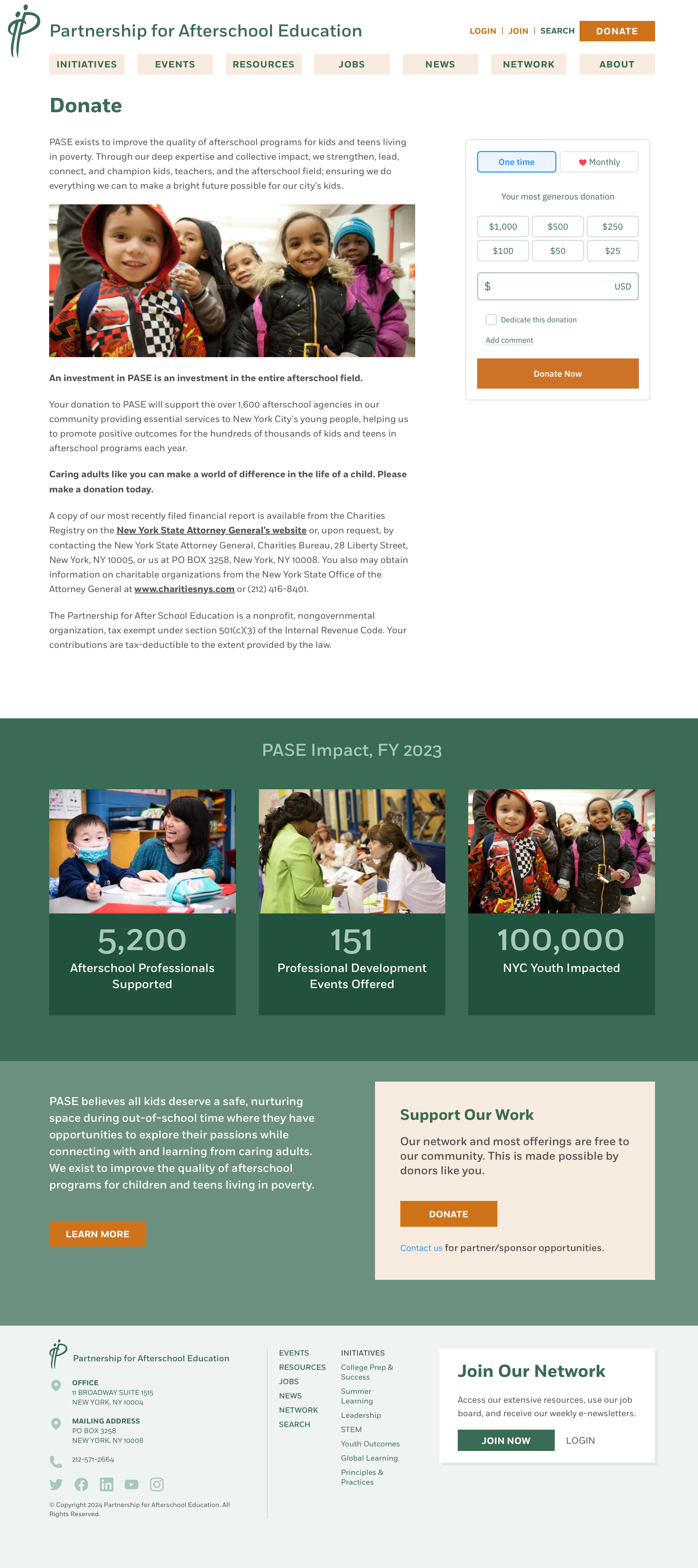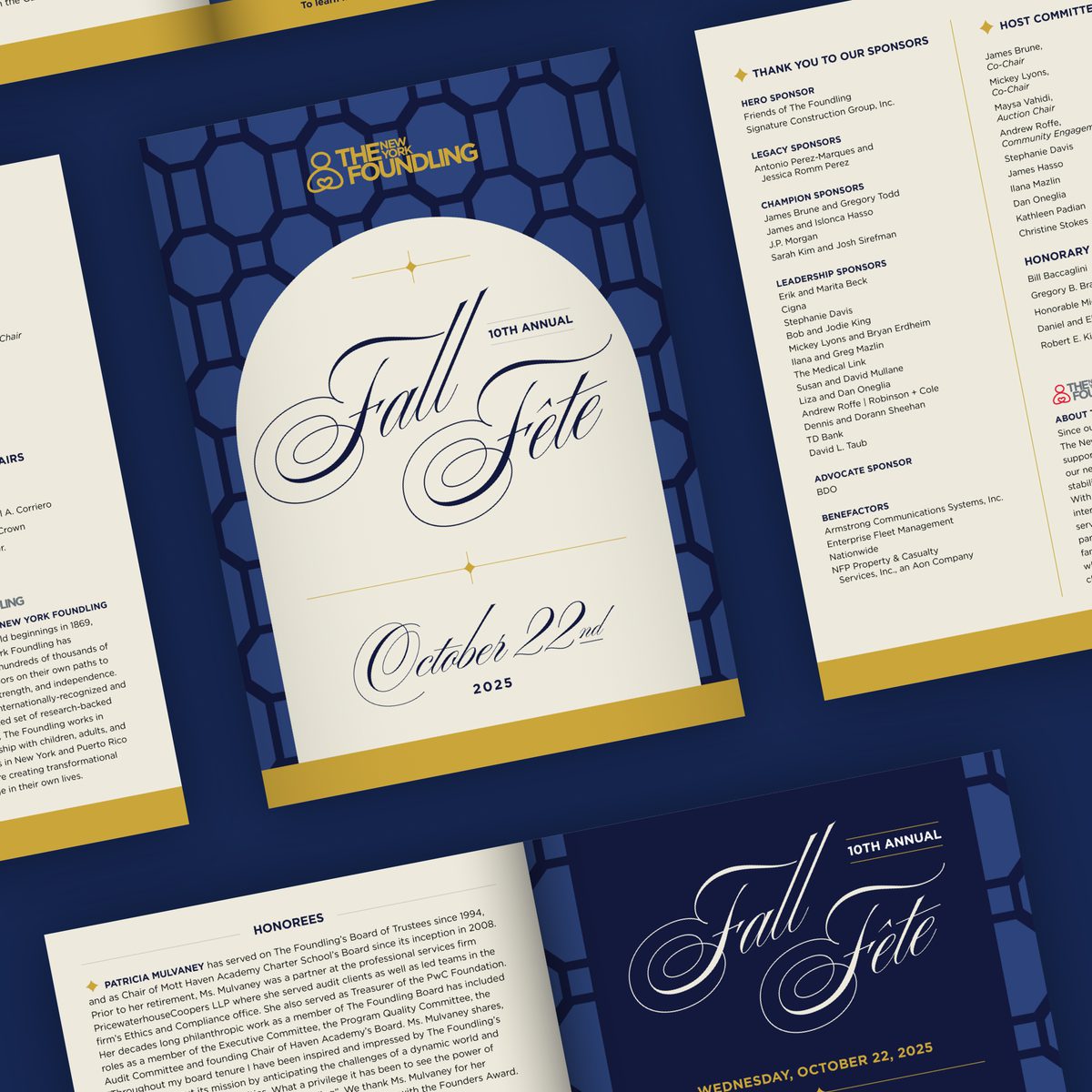- Expand Your Marketing and Outreach

- Tips for Your Team
Ways your organization’s website can support your corporate partnership efforts
Many of our nonprofit clients seek relationships with for-profit companies. These can be sources of meaningful funding and exposure. Establishing a corporate partnership takes time. It’s a relationship that has a notable exploratory phase to decide if and how best to partner.
A carefully-crafted website can support your corporate partner efforts. What are some of the specific ways your website can help? Let’s take a look.
Knowing the target audience(s)
When thinking about improving your website for any reason, start with people. The process of establishing a corporate partner may involve many different people. Who are they? When during the process might they visit your site? What needs are they hoping the website will address?
Here are some personas to consider.
The Decision Maker
Your main contact and a key stakeholder. Following your initial discussions about a partnership they visit your website. They are seeking confirmation of what was discussed. They are interested in co-branding opportunities and initiatives that can boost their brand. The website must inspire confidence in them that you can be a great partner.
The CSR/ESG Evaluator
This individual is looking for alignment with their CSR (corporate social responsibility) objectives or ESG (Environmental, Social, and Governance) criteria. They may visit to decide whether to start a conversation. Alternatively, they may visit following a conversation to confirm and solidify whether a good fit. Either way, they look for evidence of leadership that underscore your commitment and impact to their areas of interest.
The Researcher
This person is compiling an overview of your organization. Like the CSR Evaluator, they may come to your site before or after conversations have started. They're looking for mission details, impact evidence, financials, team information, and more. Likely they are going to copy and paste from your pages. They will share this information with other members of their team including key stakeholders.
The Spontaneous Donor
This person wants to make a significant, spontaneous donation. Something happened in their world and they are looking for an organization that is doing good to ease a related pain they care about. They want to get to know your organization quickly. If they develop confidence that their contribution has the potential to make an impact, they'll donate. A frictionless online donation experience is important.
What are your corporate partnership personas? Having your people in mind helps you be intentional about your website's role in supporting their needs and in turn your efforts.
How can your site help move your corporate partner conversations forward?
These website basics will help all the various personas in meeting their needs.
- Your website should have a polished presentation. It needs to earn trust and showcase attention to detail. It must inspire confidence that their company’s brand will be well received when associated with yours.
- Ensure that your content is written simply. Target a 6/7th grade reading level to help make for a light and easy reading experience.
- Avoid niche-specific terms or buzzwords that might not be broadly understood.
- Write for your visitors, not for you.
- Use headers, include pull quotes, great captions on great images, and data visualizations. Make your content skim-able.
- Create intuitive spaces on your website to give your corporate partner visitors what they need, where it will make sense for them to find it. Reduce the number of clicks needed for them to get what they want.
Here are some more specific suggestions for common pages of a website.
Homepage
Your homepage should answer clearly, who you are, what you do (programs, services, …), and how well you do it (impact). It should share key content that is of interest to the audience your organization is there for. Ideally, the homepage can introduce your organization through the context of what your main audience is interested in and needs. Consider showcasing content like recent blogs or news if publishing regularly. These can show momentum and dynamism.
About Page(s)
Your about page(s) should include your mission, what you do, impact, team, financials, and partners.
When we build a website we often describe the About page as the homepage for your supporters and partners.
Keep the CSR/ESG Evaluator in mind. Tailor your content to make clear your area of focus. Help the right potential partners see partnership potential. Focused interest areas such as environmental sustainability or teen mental health can help attract the right partner.
Consider highlighting organizational news and media placements. Showcase the dynamism of the organization for potential supporters.
Highlight your impact. Share stories of the individuals and communities your nonprofit has helped. Incorporate visuals alongside data to bring these stories to life. Balance the humanity of what you do (story) with your broader reach (data). If you have a lot to share, consider a dedicated “Impact” page within your about area.
Partner/Partnership Page
As part of a “Get Involved”, “Support Us”, or “About” area of the site you may want to consider having a partner/partnership page. This page can highlight current partners. It can share the need and impact of partnership.
What does it mean to be your partner? Articulate the need and benefits offered to corporate partners. This might include logo placement at events or employee volunteer programs.
Consider a “Case for Support”, “Impact Report”, or similar download. This resource might have everything a CSR/ESG Evaluator or Researcher visitor may need.
Contact information or a form to highlight a clear next step makes sense to include here as well.
A "Case for Support" outlines an organization's mission and the opportunity for how partner support can make and impact. It motivates by showing the difference their support makes, using clear, direct language. It can also highlight ways to partner and the ability to tailor partnerships to fit a corporation's specific goals and interests.
Contact Page
Make sure your contact page has the right person, email, and/or option on your form for potential partners to reach out to you. Present this information in such a way that it can’t be missed.
Donate Page
Your donate page should not only present a form or button to start a transaction but also make a case for the donation. Consider sharing impact testimonials and/or metrics on your donate page. We also recommend using a modern donation platform that aims to reduce friction and offers a wealth of payment options.
While not website related, consider your process following a donation. What do you do if you get a $10,000 donation spontaneously? Do you have a process to learn more about that donor, to follow up, and/or acknowledge them? You likely will want to try and engage this spontaneous donor. Maybe there is a corporate partnership to uncover.

Example donation page from pasesetter.org that includes information about the organization, impact of donations, impact stats, information to partner, and a great donation form.
Program, Service, and/or Event Pages
Do you have case studies, impact stories, or impact metrics related to the particular program or service on that page? What about news or articles for this offering? These could be very useful to the Key Stakeholder, CSR/ESG Evaluator, or Researcher. If there is a particular offering of yours that a company connects with, presenting it robustly can save them a lot of time.
Consider creating a space to highlight supporting partners if appropriate. If there are no supporting partners for that offering, showcase an opportunity to become one.

Example program page from coastguardfoundation.org that includes impact stories, highlights supporting partners, and recent program and services news.
Focusing on the needs of your corporate partner people
Your website has a part to play in how others build a relationship with you. It is always representing your organization. To help ensure it is working for you, be intentional about how it reflects you and speaks to your various target audiences.
This means thinking about your people first. To get you thinking, I shared four potential personas from a corporate partnership journey. I explored their potential motivations, timing, and needs for when they may visit your website. With this information in mind, I followed with tips and considerations for how to make a website experience work for them. Changes like those shared here can boost your brand perception in the eyes of those considering a partnership with you.
I hope you find this article helpful. If at all interested to get to know Minds On Design Lab better and how we may be able to help you, please contact us.
More Articles
- Expand Your Marketing and Outreach
A thoughtful approach to nonprofit event branding
- Expand Your Marketing and Outreach
Expert-backed tips to boost donations through your website
Mightier Newsletter
Join our community of nonprofiteers and the partners that support them. Our monthly newsletter includes resources with small and mighty teams in the social sector in mind – sharing tips to help with content creation, website use, marketing, and more.
SubscribeBrought to you by MOD-Lab
At MOD-Lab, we're the thoughtful design partner for small teams like yours doing big things in the social sector. We create memorable branding, design materials, and websites that showcase the quality of your work and reflect your true impact.


